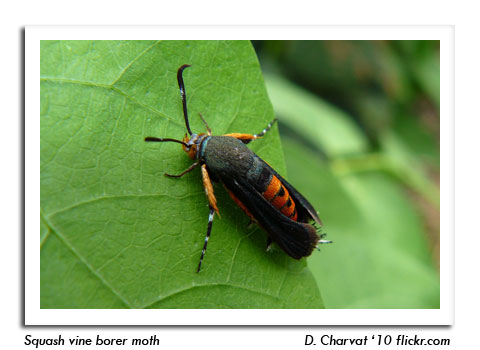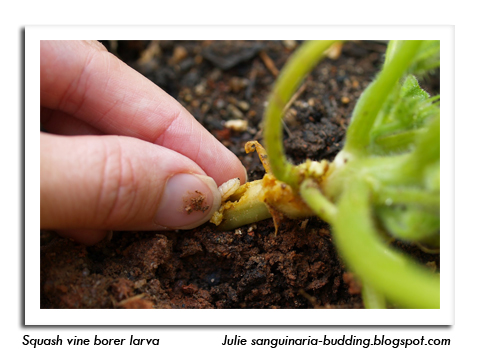
 |
|
|
Vegetables
Volume 59 Number 8 Date 06/19/2014 SQUASH VINE BORER - Moth emergence and egg laying can be anticipated by June 24 in advanced southern areas, about the time chicory blooms. Pumpkins, squash, gourds and other vine crops should be examined daily for eggs and evidence of larval boring from 900-1,000 degree days (base 50°F). Insecticidal controls must be applied to the stems of plants when the adults are first observed, especially while runners are less than two feet long. Repeat applications may be required throughout the three-week oviposition period. COLORADO POTATO BEETLE - Larvae in southern and west-central Wisconsin are primarily in the first and second instars. Bacterial insecticide treatments of Bacillus thuringiensis var. tenebrionis (Btt) are most effective at this time, while the larvae are very small. Most bacterial products persist only two days and must be reapplied 2-3 times to effectively control populations. Treatment is recommended when 6-8 inch plants show 20-30% defoliation. WHITE-LINED SPHINX - These distinctive green, yellow and black caterpillars, which may exhibit considerable color variation, were observed this week on evening primrose in Dane County. The larvae are offspring of migrant moths that arrived from the southern U.S. last month. Similar to the armyworm, these caterpillars occasionally reach outbreak levels and can move in tremendous numbers in search of food, consuming entire plants and covering roadways. Large populations occur approximately every 6-7 years in Wisconsin and 2013 was a "banner year" for this insect. -- Krista Hamilton, DATCP Entomologist 





|
|
|